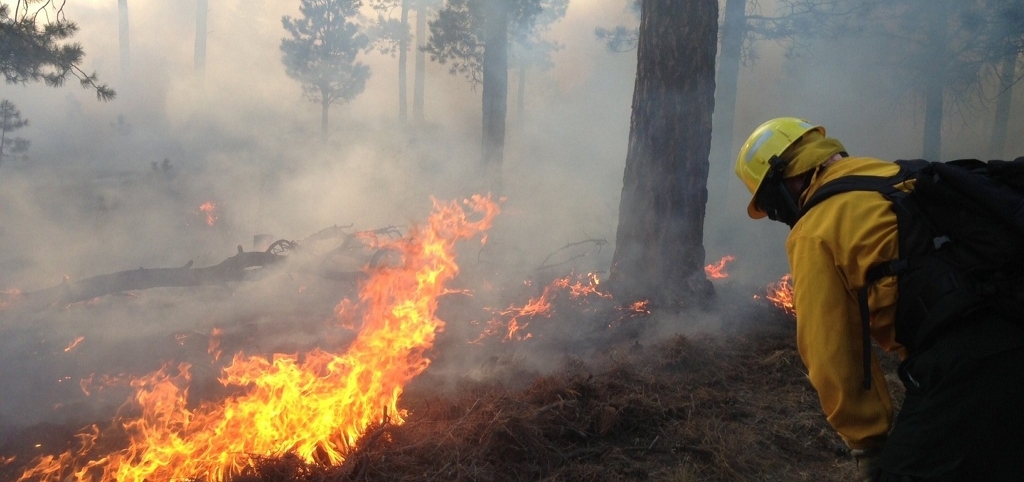Description
A wildfire is a raging, uncontrolled fire that spreads rapidly through vegetative fuels, exposing and possibly consuming structures. Wildfire is a unique hazard in that it can be significantly altered based on efforts to control its course during the event. The Virginia Department of Forestry (VDOF) indicates that there are three principal factors that can lead to the formation of wildfire hazards: topography, fuel, and weather. The environmental conditions that exist during these seasons exacerbate the hazard. When relative humidity is low and high winds are coupled with a dry forest floor (brush, grass, leaf litter), wildfires may easily ignite.
Location and Extent
Wildfires occur throughout wooded and open vegetation areas of Virginia and can occur any time of the year. In Virginia, the greatest number of fires occur in February, March, April, and May. This period is known as Spring Fire Season. Fall Fire Season is in October, November, and December.
History
According to the statistics from the Insurance Information Institute, there were 1,266 reported wildfire incidents in Virginia which burned 15,224 acres in 2018. In the past two decades, 2002 was the fourth busiest year, showing the severity of the abnormal summertime wildfire season. Virginia Department of Forestry documents wildfire occurrences across the Commonwealth. There were approximately 949 recorded wildfires in the region (there was no data regarding the City of Lynchburg) during 2002 to 2016.
Plan Chapter
CVPDC HMP 2020





